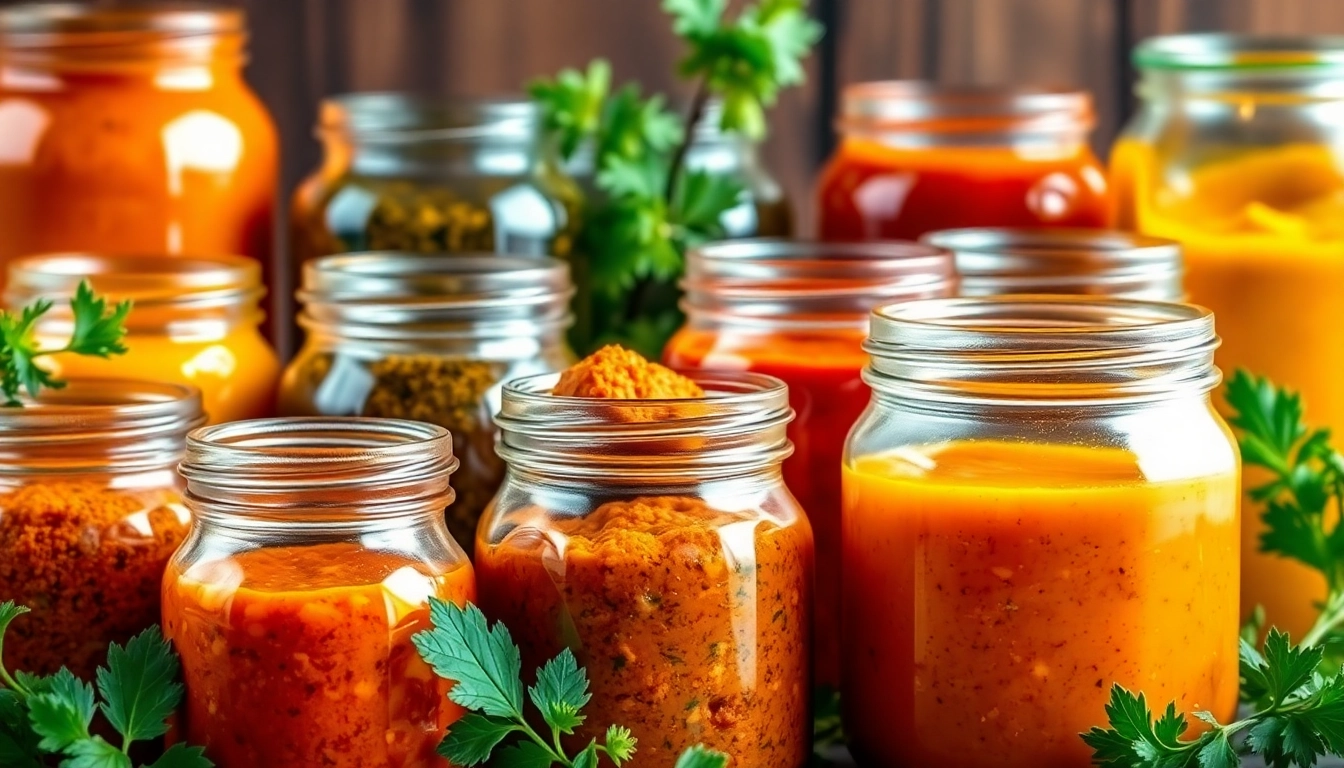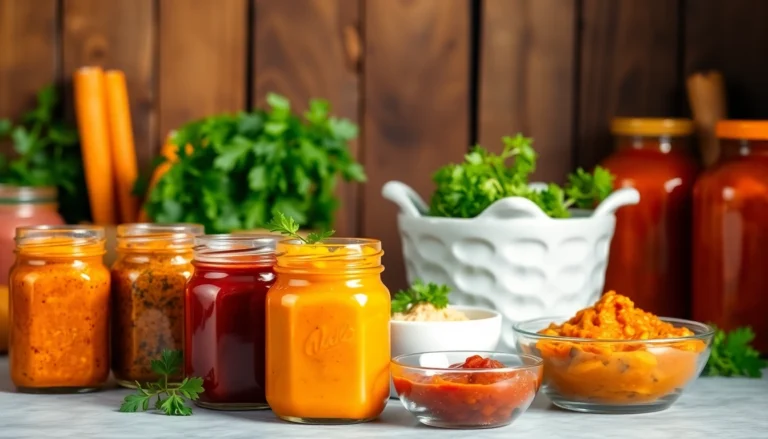
Mastering Curry Paste Production: A Comprehensive Guide for Quality and Export Excellence
Understanding the Basics of Curry Paste Production
Curry paste is the cornerstone of countless flavorful dishes across diverse cuisines, especially in Indian, Thai, and Southeast Asian cooking. As a manufacturer aiming for excellence in producing authentic Curry Paste, understanding the foundational principles is essential. This starts with sourcing high-quality ingredients and implementing rigorous standards to preserve flavor, aroma, and nutritional integrity.
Ingredients and Quality Standards for Authentic Curry Paste
The authenticity of a curry paste hinges on sourcing fresh, premium spices such as turmeric, cumin, coriander, and chilies, coupled with aromatic herbs like garlic, ginger, and lemongrass where applicable. Certified quality control standards and adherence to international food safety norms—such as HACCP, ISO 22000, and FSSAI certification—ensure that each batch maintains consistency. Using natural preservatives and avoiding artificial additives bolster product integrity, which is vital for export markets demanding premium quality standards.
Traditional vs Modern Manufacturing Methods
Traditional methods involve stone grinding and slow fermentation processes, emphasizing flavor depth and authenticity. However, modern manufacturing leans on technological innovations such as high-speed grinders, vacuum blending, and pasteurization, which enhance productivity, ensure uniformity, and extend shelf life. Successful manufacturers strike a balance by integrating traditional flavor profiles with modern efficiency—such as cold grinding to preserve aromatic oils—thus satisfying both artisan and industrial demands.
Ensuring Consistency and Flavor Balance in Curry Paste
Consistency is achieved through meticulous recipe formulation, standardized spice blends, and precise control of processing parameters. Regular sensory evaluation, chemical analysis for capsaicin, essential oils, and moisture content, along with feedback loops from taste panels, help refine flavor profiles. Implementing quality management systems and investing in employee training further minimizes variation, ensuring every batch aligns with consumer expectations across domestic and international markets.
Optimizing Curry Paste for Export and Retail Markets
Packaging Solutions for Freshness and Shelf Life
Effective packaging is crucial for maintaining freshness, aroma, and flavor during transit and storage. Vacuum-sealed pouches, retort pouches, and resealable jars with oxygen barriers are popular choices. Packaging materials should be compliant with international standards like FDA and EU regulations, ensuring food safety and tamper evidence. Additionally, active packaging technologies such as oxygen scavengers and UV protection help extend shelf life and preserve products’ natural qualities, appealing to consumers seeking authentic, preservative-free curry pastes.
Compliance with International Food Safety Certifications
To penetrate global markets, manufacturers must align with certifications including ISO 22000, HALAL, Kosher, and Organic standards where applicable. Compliance conveys trust and assures buyers of safety and quality. Regular audits, supplier qualification programs, and traceability systems are integral to maintaining certifications. Moreover, understanding import requirements—such as labeling, allergen declarations, and ingredient transparency—facilitates smooth export operations.
Effective Labeling and Branding Strategies
Clear, attractive labels that highlight key features—such as ‘Authentic Recipe,’ ‘Natural Ingredients,’ and ‘Export Quality’—enhance shelf appeal. Multilingual labels catering to target markets, along with QR codes linking to detailed product information, bolster transparency. Consistent branding across packaging and promotional materials builds recognition. Highlighting awards, certifications, and participation in global trade shows like Biofach exemplifies credibility, fostering trust with international buyers.
Incorporating Variations and Flavors into Curry Paste
Regional and Cultural Influences on Curry Paste Recipes
Regional tastes greatly influence curry paste formulations. For example, South Indian variants emphasize red chilies and tamarind, while Thai formulations lean on lemongrass, galangal, and kaffir lime leaves. Understanding these nuances allows manufacturers to develop authentic regional products or hybrid flavors suited for global markets. Customizing spice mixes to reflect authentic regional identities enhances market differentiation and customer loyalty.
Developing Specialty Flavors for Niche Markets
Niche markets demand innovative flavors, such as organic, vegan, or low-sodium curry pastes. Spiced blends incorporating superfoods like turmeric and moringa, or fusion variants that combine traditional spices with exotic ingredients, can appeal to health-conscious consumers. Highlighting these unique attributes in marketing efforts builds brand positioning as a forward-thinking, health-centric manufacturer.
Customizing Spice Blends for Client Preferences
Customization offers clients tailored flavor profiles, catering to local tastes, dietary restrictions, and specific recipes. This involves close collaboration with clients, taste testing, and iterative modifications. Advanced blending technology allows precise control over spice ratios and flavor intensity, ensuring client satisfaction and fostering long-term partnerships.
Marketing and Branding Your Curry Paste
Creating Compelling Content and Product Descriptions
Effective content communicates the product’s unique qualities—its authentic heritage, health benefits, and versatility. Engaging storytelling, high-quality images, and detailed descriptions help position your curry paste as a premium, authentic choice. Emphasizing certifications, awards, and participation in major exhibitions validates credibility; as seen with Spice Nest’s successful showcase at Biofach 2024, industry recognition boosts consumer confidence.
Leveraging Trade Shows and Industry Events
Participating in prominent food expos, both domestic and international, provides invaluable networking opportunities that accelerate brand awareness and sales pipelines. Crafting a compelling booth presentation, offering tastings, and distributing samples can significantly influence buyer decisions. Platforms such as Biofach, FOODEX, and Gulfood serve as global stages for showcasing premium curry pastes and related products.
Building a Digital Presence for Global Reach
A professional website with comprehensive product catalogs, certifications, and client testimonials enhances online visibility. Active engagement on social media platforms, targeted digital marketing campaigns, and SEO strategies focusing on keywords like ‘curry paste manufacturer’ position your brand at the forefront of search results. Sharing success stories and participating in food forums strengthens brand authority.
Measuring Performance and Scaling Your Curry Paste Business
Analyzing Market Trends and Customer Feedback
Regular review of sales data, customer reviews, and industry reports helps identify emerging flavor trends and consumer preferences. For example, rising demand for organic or gluten-free curry pastes indicates areas for product innovation. Implementing customer surveys and taste panels informs continuous improvement, aligning offerings with market needs.
Innovating New Variants Based on Consumer Demand
Ongoing R&D drives innovation—introducing new spice blends, health-focused variants, or region-specific formulations. Listening to customer feedback about desired flavors enables targeted development. Using insights from trade shows and online analytics accelerates time-to-market for new products.
Scaling Production Without Compromising Quality
As demand grows, investing in automated processing lines, maintaining strict quality assurance protocols, and expanding supplier networks ensure consistent product quality. Implementing batch traceability systems helps manage large-scale production while adhering to safety and quality standards, paving the way for successful exports.




